Malayan Krait – Blue Krait
Malayan Krait (Bungarus candidus)
Note – About 50% of all bites from this krait results in human death – even with the administration of antivenin (antivenom). Death is the usual result if no treatment is given. The closely related Bungarus multicinctus is ranked 3rd in the world for the toxicity of venom based on some LD-50 data (terrestrial snakes). Do be careful.
Adult Malayan Krait (Blue Krait) from Thailand. These are common across much of the country and have a very potent neurotoxic venom. Contact with this krait should be avoided.
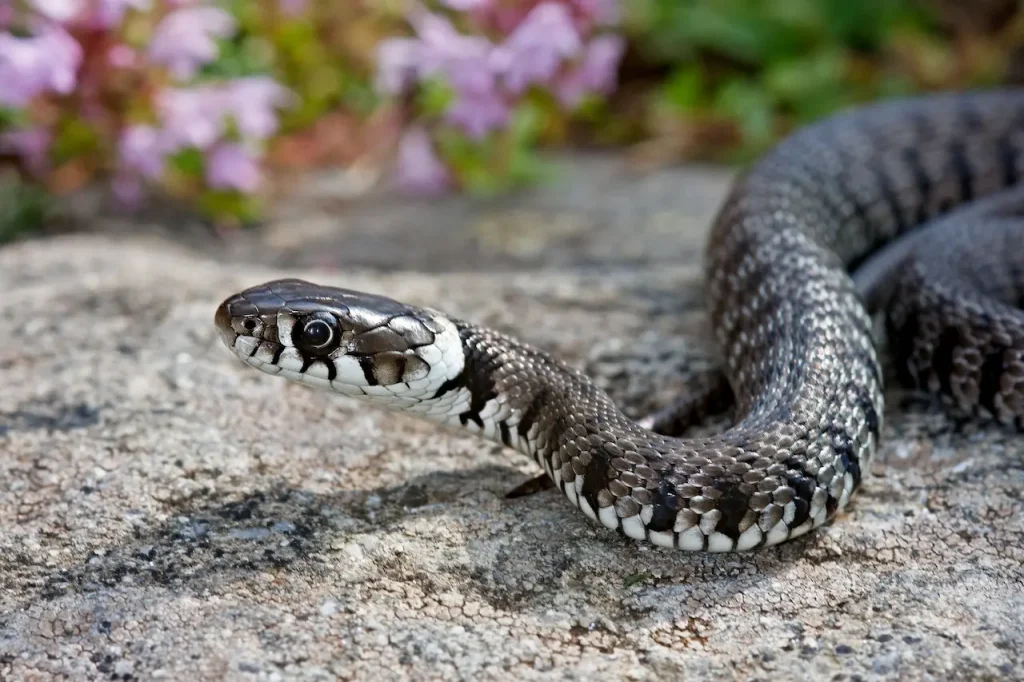
Malayan Blue Krait
Bungarus candidus (Malayan Krait or Blue Krait)
Thais say: Ngoo tap saming kla, or ngoo kan plong
Length: Max length about 1.6 meters.
Range: All over Thailand and much of Southeast Asia.
Notes: I’ve caught scores of these snakes since 2006 in Thailand. They are quite distinctive from other black and white banded snakes when adult, but when hatchling or juvenile, the differences are almost negligible. Do be very cautious to not hand-hold any black and white banded snake in Thailand.
The risk is too great. The head of the Blue Krait is not nearly as large as the yellow and black “Banded Krait” (B. fasciatus). This krait’s body doesn’t have the high vertebral ridge either. Be careful around these snakes, their venom is very potent.
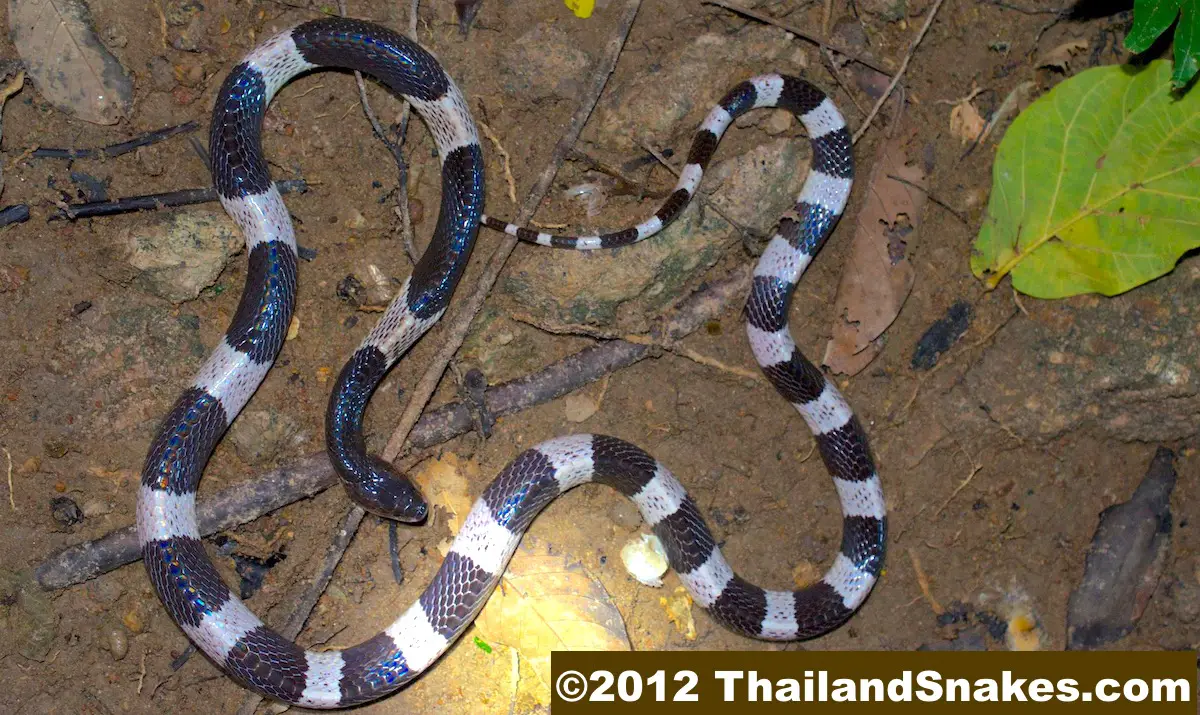
Habitat: These snakes appear to favor flat country though I have found them on hills of 250 and 300 meters elevation. Not found higher than 1,200 m above sea level often. They prefer proximity to water, rice fields, and rice dams. To find a nest, this krait invades and takes over rat holes in the ground.
Active Time? The snake is mainly active at night and is not fond of the sunshine. They are shy and attempt to cover their head with their tail. I tend to find them active most consistently between 9 pm. and 11 pm.
Food: Other snakes – primarily, but also lizards, mice, frogs and other small animals.
Defensive Behavior: Not what I would consider aggressive or strongly defensive. They don’t tend to bite unless really provoked. Still, you should never hold one. I have only seen one in a dozen of these snakes attempt to bite, and it was the result of being grabbed with tongs near the head.
Venom Toxicity: Very toxic – even stronger on the LD-50 scales than Naja kaouthia (cobras). Bungarus krait venom is neurotoxic and attacks the human nervous system, shutting it down. Coma, brain death, and suffocation due to paralysis of the muscles and nerves necessary for crucial functions like the diaphragm, and or heart, are frequent causes of death.
Death results usually 12-24 hours after an envenomed bite that is not treated. Little or no pain is usually felt at the bite location. After envenomation approximately 50% of bite victims will succumb to the effects of the venom, dying usually from respiration stopping when the diaphragm stops.
The Malayan Krait is more toxic than the Banded Krait. The venom is more potent.

Here’s a short overview of what happened to one victim of a bite by Bungarus candidus (black-white striped krait):
A patient bitten by Bungarus candidus (Malayan krait) developed nausea, vomiting, weakness, and myalgia 30 minutes after being bitten. One hour later, ptosis and occulomotor palsies as well as tightness of his chest were noted. Respiratory failure requiring mechanical respiration appeared 8 hours after the bite and lasted for nearly 96 hours. The two bite sites were virtually painless and resulted in slight transient erythema and edema. No specific antivenin was available, and treatment consisted of respiratory support and management of aspiration pneumonitis. Recovery was complete. (Source: Department of Medicine, Chulalongkorn University Hospital and the Queen Saovabha Memorial Institute of the Thai Red Cross Society, Bangkok, Thailand)
Handling: The banded and Malayan blue kraits are not known to bite during the daytime. That doesn’t mean they don’t, it just means they don’t do it commonly. At night these snakes bite rather easily, as evidenced by the numerous bites that occur at night to people usually laying down to sleep on the floor.
Handholding the kraits for any reason seems rather absurd to me, yet snake handlers across the globe do it regularly. The krait venom is so toxic, it’s just not worth the risk – however small. After catching many of these snakes in the wild – I’ve seen them bite the snake tongs just once.
Antivenin | Antivenom: There is a specific krait antivenin that is given for Malayan Krait bites. If you don’t have access to that antivenin you can ask the hospital if they have Tiger Snake antivenin – which can be used as a substitute for krait antivenin and works well.
Offspring: Lays 4-10 eggs. Juveniles are 30 cm long at birth. Hatching occurs in June-July in Thailand.
Classification:
Kingdom: Animalia
Phylum: Chordata
Subphylum: Vertebrata
Class: Reptilia
Order: Squamata
Suborder: Serpentes
Family: Elapidae
Genus: Bungarus
Species: Bungarus candidus
(Classified as Bungarus candidus by Linnaeus in 1758.)
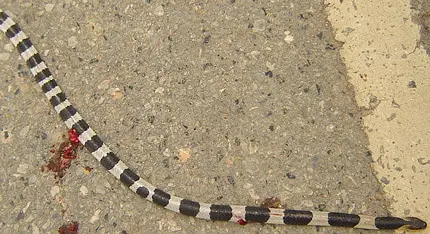
Very Recent Malayan Krait Find in Rainforest:
Malayan Krait Attempting to Prey Upon Sunbeam Snake (and fails!)
Venomous Snakebites and Near Misses!
More than 34 stories of venomous snakebites and very near misses from Southeast Asia’s most deadly snakes – King Cobra, Malayan Pit Viper, Monocled Cobra, Banded Krait, Malayan Krait, and more! Digital Book with over 100 pages by Vern Lovic.
Find at Amazon.com – Venomous Snakebites and Near Misses >

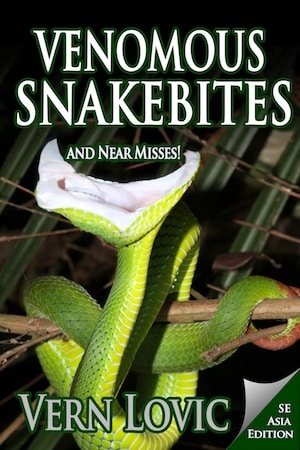
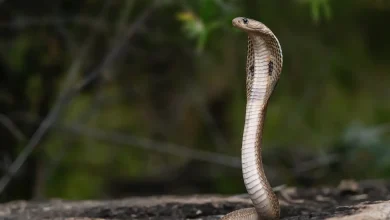
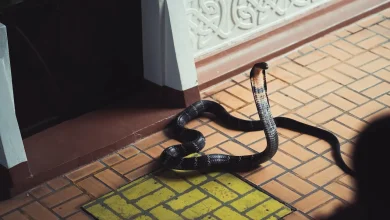
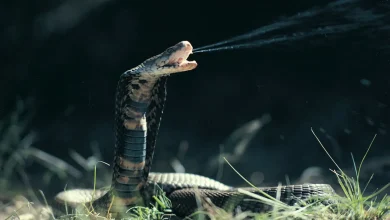
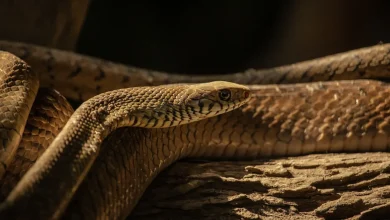
this was very helpfull
glad to hear it…
Hi Vern,
Last night there was a small dark brown and white banded snake attempting to get into my house, I live inTaling Ngam and unfortunately I didn’t take a picture of this snake, it looked like a banded kraut. What othe r species might it have been? Please send a pic if you have one.
Thanks
A Malayan krait could appear like that. Was it this snake – https://thailandsnakes.com/venomous/front-fanged/malayan-krait-blue-krait-highly-toxic-venom/
Helpful information–thanks! We live in Vientiane, Laos and I reckon these can be found here. Just wondering if the hatchlings or young snakes can have thinner stripes. We found one in our yard whose black stripes were thinner than the one in your picture and so we are trying to identify it. What do you reckon?
King cobras, Laotian wolf snakes both have thinner stripes. The first is deadly (of course), and the second is harmless.
Hi Vern, how do you differentiate male and female’s malayan krait? Plenty of them in my hometown Kedah. Thanks
Why do you need to differentiate them?